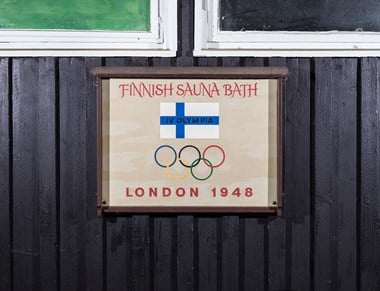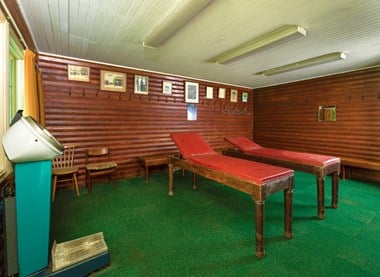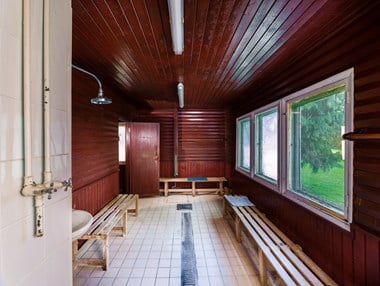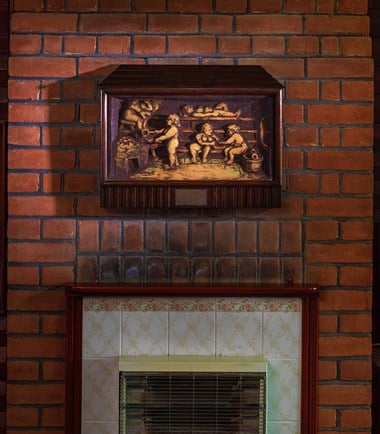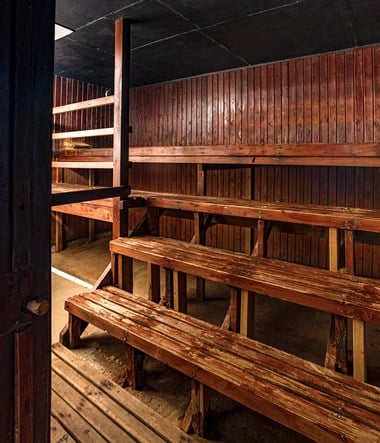Hidden Historic Sauna in Kent Gains Listed Status
A hidden historic Finnish sauna in Aylesford, Kent has been listed at Grade II by the Department for Culture, Media and Sport on the recommendation of Historic England.
The wooden building is a unique relic of the 1948 Olympic Games in London. It was brought over by the Finnish Olympic team and gifted to the nation after the Games. It is thought to be the oldest surviving purpose-built sauna in England in continuous use, and possibly the earliest surviving Olympic sauna in the world.
The listing of this Finnish sauna is excellent news, not only because of the building’s unique architecture, but also because of its significance to Finnish-British relations and our common sporting history. The London 1948 Olympics athlete’s village sauna is likely the oldest surviving Olympic sauna to date. Preserving it will guarantee that future generations in the UK will get to learn about sauna as an institution and its significance to the Finnish culture. I especially want to thank the local community in Aylesford, who have looked after this special building for so many years.
This recognition of national significance has been welcomed by supporters far and wide, including the local Cobdown Sauna Club, which looks after the building, the British Sauna Society, the Twentieth Century Society, and local MP Tracey Crouch, who visited the sauna with the Finnish Ambassador last summer.
The modest prefabricated building was transported from Richmond Park, London to Kent in 1949 as a recreation and leisure facility for employees of the Reed paper mill at Aylesford. The mill already had ties to Scandinavia as it imported wood pulp from the Nordic countries to produce its paper, and Finnish athletes had spent time training at the mill’s sports facilities ahead of the Games.
Gallery
Please click on the gallery images to enlarge.
Inside the modest timber-panelled building is a dressing room, kitchen, and wet room alongside the sauna itself. Original features include hooks for clothes and towels and a ceramic foot basin beneath one of the showers. Most of the sauna room is occupied by a three-tiered wooden bench – this is an original fixture but some of the slats have been replaced over time. The sauna was originally heated by a wood fire but was later fitted with an electric heater.
As a former Heritage Minister I was always thrilled to be able to list interesting historic buildings, with a rich, vibrant background that enabled stories to be told in today’s environment. I am therefore absolutely delighted that the Finnish Sauna, with its connection to sport and our now gone paper mills, is to have its heritage protected by this listing, giving local people the opportunity to stay connected to an industry that is sadly no more, via this wonderful gift from the 1948 Finnish Olympic team.
By 1957 the sauna had been relocated to a nearby part of the Reed site, where it still stands today in what is now called Cobdown Park. The sauna has been enjoyed and maintained by local users ever since and remained in frequent use until very recently. The electrics now need replacing and Cobdown Sauna Club is actively looking to secure the sauna’s future so that it can remain a place of rest, relaxation and community for years to come.
I am so pleased that the Finnish Olympic Sauna has been granted Grade II listing which will keep it safe for future generations. I would like to thank everyone who has contributed towards the application. We can now go forward and get the sauna working again for the members of Cobdown Sauna Club.
Sauna Tradition
Pronounced ‘sow-nah’ by the Finnish, the sauna tradition is deeply established in Finnish culture. Beyond the physical benefits of cleansing and relaxation, many Finns consider the sauna to be a sacred space of communal gathering and purification where societal bonds are forged, and decisions are made. This enduring cultural significance has led to the widespread presence of saunas in Finnish homes, public buildings and workplaces. In 2020 UNESCO inscribed Finnish sauna tradition on its List of Intangible Cultural Heritage.
Finland began to promote its use of traditional saunas and sports massage internationally in the early twentieth century, and a tradition of Finnish Olympic Saunas began. Finland first provided a sauna for the 1924 Olympic Games in Paris, with Finnish runner Paavo Nurmi attributing his success to the sauna’s benefits – he won five gold medals.
We are delighted that this time capsule of a sauna, its story and the guardianship of Cobdown Sauna Club are all recognised through the listing. It highlights that saunas have history in the UK and were adopted as soon as Finns started sharing their tradition with the world – supported by architectural and construction innovation to help post-WW2 reconstruction and growth. Saunas are an inherently democratic, communal and inclusive form of bathing and the journey of the Finnish Olympic Sauna from 1948 Games, first to workplace well-being, then to local community, is an inspiring story to preserve and share.
The 1948 Olympic Games in London was the first to be held after the Second World War and became known as the ‘Austerity Games’. Very few new buildings were constructed due to economic constraints which means that the Finnish Olympic Sauna is a rare surviving example of a building constructed specifically for these Games.
It is also a rare surviving example in England of a prefabricated building manufactured by Puutalo Oy (Timber Houses Limited), a significant innovator and distributor of prefabricated timber buildings in the mid-twentieth century, designed by noted Finnish architect Toivo Jäntti – one of the two architects behind Helsinki’s 1938 Olympic Stadium.


